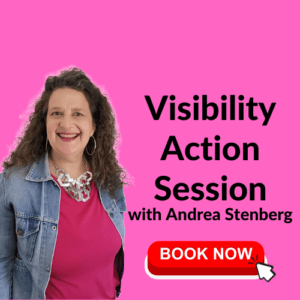For many small business owners, learning is a key part of becoming successful. No matter how much experience you had in the work world, there will be areas of running a business that are new to you: perhaps accounting, marketing, sales, technology. And worse, technology changes so rapidly that even if you were up to speed when you started your business, if you don’t keep learning you’ll soon fall behind.
The problem with learning is it’s easy to fall into the trap of always looking for more information. And finding more information is always easy. Choose any topic and you can find countless books at the library, in the bookstore and probably on your own shelves. There are also teleseminars, courses, e-courses, tutorials and more.
And many of these learning tools promise knowledge and systems that will make your business run smoother or help you earn more money. And many of these programs deliver on their promises – if you implement what you’ve learned.
And there’s the crux! Too often small business owners get trapped in a cycle of never-ending learning, without ever implementing these new tools, strategies or systems.
For many entrepreneurs, the reason we are in business is because we’re insatiably curious. We want to learn more, do more. We have a love of knowledge.
But if we’re spending countless dollars – and hours – learning new things for our business but never seeing results, we’re wasting our money and our time. Like everything else in our businesses, we need to see a return on our investment.
So why do we sometimes get on the learning merry-go-round without implementing what we learn? Writing professional Tara Bloom believes for many it’s a lack of confidence. Tara writes:
When I was first launching my businesses, I took course after course, read book after book, devoured newsletter after newsletter. At some point, I became aware that I already knew much of what I was consuming; it wasn’t knowledge I was seeking, but confidence.
I agree with Tara. That was certainly my experience. Until once day I was reading a marketing book by a very successful and well-known expert and I suddenly had the thought, “wait a minute. I already know this”. Then I had a more radical thought. I knew I could do it better then this well-known expert. That was an eye opener for me.
For many of us, the issue is we don’t trust that we know what to do. Or even worse, we’re worried about making mistakes. And yet if we don’t ever make mistakes, we’re not learning anything. Making mistakes is what shows us we’re pushing the boundaries of our abilities.
So how do we avoid this trap of using learning as a safety blanket? Karen Lund, a non-profit management professional, suggests we “start the learning process with an objective in mind.” What a radical concept! It’s funny. I set goals for every other area of my business: marketing, sales, product development. But it’s never occurred to me to set learning goals. Or to at least check that my learning is aligned with my other goals.
Too often I pick up a book because the title is interesting or I know the author. Or I listen to a teleseminar or download an ebook because the topic is interesting. Or I sign up for a several thousand dollar course because I admire the instructor and am interesting in the subject. But I never take the time to see how these learning tools fit into my overall objectives.
So here’s my five-step plan to stop being an information junkie.
1. Check to see if the learning tool fits with your other business goals. If yes, go ahead. If no, pass for now, no matter how compelling the offer.
2. Devour the material with your goals in mind. Look for specifics you can implement immediately. I often use post-it notes to flag key points in written materials and use a notebook for audios.
3. Take at least one tip, strategy or tool from your learning and implement it now. Don’t worry about perfection. That will come with practice (if at all).
4. Evaluate the results. Use your business goals to see if what you’ve learned and implemented has moved you closer to your goals. If you’ve made progress, keep it up. If not, decide if it’s the implementation that’s at fault or the tool. Act accordingly.
5. Once you’ve taken everything you can from a particular source, and only then, decide what fits into your goals next. Look for another source to teach you what you need to know next.
I’ve only recently implemented the rule that I can’t buy any more courses until I’ve implemented what I’ve already learned.
Of course, from time to time it’s worth going back over material you’ve already picked clean. Sometimes you just need a refresher course – to be reminded of what you already know. And sometimes you’ll find you pick out new gems because you’re in a new place and ready to learn something different.
Andrea J. Stenberg
Can you relate to this phenomenon. Please leave a comment and share your thoughts.



